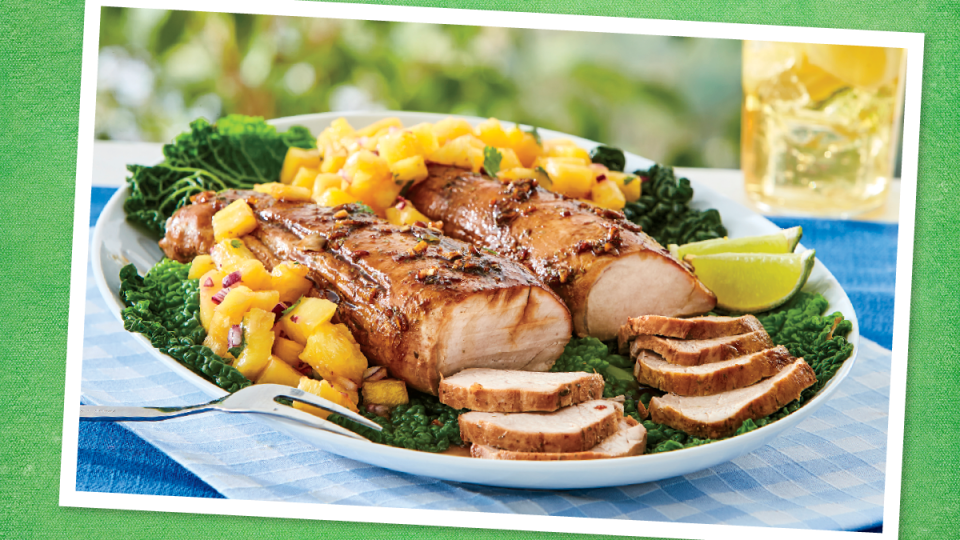
“There’s so much misinformation about tofu out there,” says cookbook author Andrea Nguyen. One of those myths, she notes, is the idea that tofu must be “forced into, you know, like a vise grip, so that it is so firm that it doesn’t fall apart.” Indeed, while Asian recipes more often accept tofu’s natural texture, techniques like pressing and freezing dominate Western tofu preparations. These not only imbue tofu with an unwarranted sense of fussiness, but they can elide one of tofu’s fundamental truths. “Tofu is tender, and you need to invite that tenderness in,” Nguyen says. “Or else you’re gonna get the equivalent of overcooked chicken breast.”
Consider this your sign to skip the full day of pressing a block between two wiggly cutting boards and a cast iron pan, and your permission to forget about that overnight marinade. “I was thinking people need a way to make tofu that’s less intimidating to prepare,” says Nguyen, whose soy-seared tofu recipe appears in Kristen Miglore’s Food52 Simply Genius: Recipes for Beginners, Busy Cooks, and Curious People, released by Ten Speed Press last week. Understand moisture — and how it can work in your favor — and the result is what Nguyen calls “little tofu that has big flavor, and that is low effort.”
“I’ve eaten, cooked with, and written about tofu for many years,” adds Nguyen, the author of, among many titles, 2012’s Asian Tofu. “I was like, let’s just let the damn thing release all its water in the pan.” While putting tofu (drained but still wet) in a pan and spooning soy sauce (also wet) on top might sound counterintuitive, it works, Nguyen explains, creating tofu that is flavorful, tender on the inside, and crisp on the outside.
By cooking tofu in an unoiled pan with no marinade or coating, save for a spoonful of soy sauce on each side, you allow the tofu to first release the water from all its nooks and crannies. Then, as the water evaporates off, the tofu takes on flavor as it absorbs the soy sauce. Only when the soy sauce has evaporated from the surface do you add oil, since oil and water would otherwise prevent a good sear from forming. “You’re gonna create this browning effect that creates this wonderful umami flavor all over the tofu and this beautiful little crust too,” Nguyen says.
As far as cooking liquids go, you could try Maggi seasoning, fish sauce, or coconut aminos (in the latter case, Nguyen recommends adding extra salt). But “soy sauce is the perfect thing, and there are so many varieties of soy sauce,” Nguyen says, referencing mushroom soy sauce and molasses-enhanced dark Chinese soy sauce as just two examples. “I think this is a particularly fun recipe for cooks to explore tofu with, or soy sauce with,” she adds.
Fewer obstacles to cooking tofu will hopefully give you more enthusiasm for cooking it; Nguyen’s own excitement over its possibilities persists after all her years of researching and cooking with it. “Tofu has personality. It never fails to surprise me,” she says. From a little bean comes so many textures and possible preparations. “It’s an ingredient that, for me, allows me to explore what it means to be East Asian,” Nguyen adds. “It allows me to also present an Asian ingredient to people and just say, look at how deep this is — even though you may just think of it as a plain white block.”
Soy-Seared Tofu
Serves 2 to 4
Ingredients:
1 (14-ounce/400 grams) block extra-firm tofu
1 tablespoon soy sauce*
1 tablespoon neutral oil, such as canola
Instructions:
Step 1: Drain the tofu and pat it dry with a clean kitchen towel. On a cutting board with a chef’s knife, slice the tofu crosswise into two pieces, then slice each piece crosswise into four pieces, for a total of eight rectangles (they should look like big dominoes). Lay them in a large nonstick skillet in a single layer. Drizzle over the soy sauce and flip to coat both sides.
Step 2: Cook over medium heat until nicely browned and dry on the bottom, about 5 minutes. Drizzle the oil over the tofu, then use a wide (not metal) spatula to flip them. If the tofu is sticking, patiently fry a little longer. If it doesn’t easily flip, use the back side of the spatula to scrape up as much of the browned surface as you can before flipping.
Step 3: Let cook long enough to brown the second side, 4 to 5 minutes. Shake the skillet to see if the tofu will dislodge from the bottom. When there is a little movement, flip the tofu over to add extra color to the first side, if needed. When both sides are a rich, mottled brown with dark brown edges, lift the tofu onto a cooling rack (optional) to dry for about 5 minutes before serving.
The tofu will keep in a sealed container in the refrigerator for 5 days. Eat at room temperature or gently reheat in a nonstick skillet over medium heat with a little oil.
*About that soy sauce: If you only have low-sodium soy sauce, season with a little extra salt to taste.
Excerpted from Food52 Simply Genius: Recipes for Beginners, Busy Cooks, and Curious People by Kristen Miglore. Copyright © 2022 by Kristen Miglore. Used with permission of the publisher, Ten Speed Press. All rights reserved.
from "recipes" - Google News https://ift.tt/CKSthzw
via IFTTT

No comments:
Post a Comment